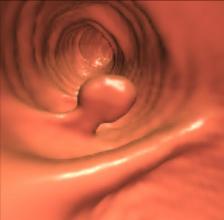Colonoscopy Procedure – The Risks Involved
The colon is the posterior part of the digestive canal which is involved in absorption of liquids and nutrients from the solid wastes before excretion. It is hence, and important part of the digestive system. The colonoscopy procedure is carried out when this distal part of the alimentary canal needs to be examined for signs of cancers, ulcers, fistulas or any other such anomalies. Often, patients have the misconception that the examination is carried out only for ‘Colon cancer'; but this is not true.
 In most cases, the colonoscopy procedure is safe and complications are seldom seen. The colonoscopy instrument – called the colonoscope – is entered into the anus and monitored technically. The device records images of the colon as well as helps in clearing blockages and polyps or to take a biopsy of tissues for studying. The process is relatively painless and but sometimes complications may arise.
In most cases, the colonoscopy procedure is safe and complications are seldom seen. The colonoscopy instrument – called the colonoscope – is entered into the anus and monitored technically. The device records images of the colon as well as helps in clearing blockages and polyps or to take a biopsy of tissues for studying. The process is relatively painless and but sometimes complications may arise.
The minor complications that can be experienced are mainly nausea and subsequent, vomiting; allergies on the skin around the anus and dehydration. Dehydration is common because the colon passage has to be free from solids to allow proper examination. Due to this,
During the process, the abdomen is filled up with air so that the health care expert can view the internal regions of the alimentary canal clearly on the computer screen.
As a side effect of the procedure, cramps in the stomach may be experience. This may be accompanied by abdominal swelling. However, these symptoms generally do not last for a very long duration.
When a biopsy is carried out, a small amount of tissue is collected from the body. Hence, the bowel may contain small amounts of blood. The patient may suffer a slight loss of blood for a few days.
Further, during the test, the patient is administered certain specific medications to which the body can develop an allergic reaction. The risk involved here, is the same as any other medical procedure. Further, there is a uncommon possibility that the intestinal wall is scraped or damaged slightly causing a perforation or infection.
Tags: